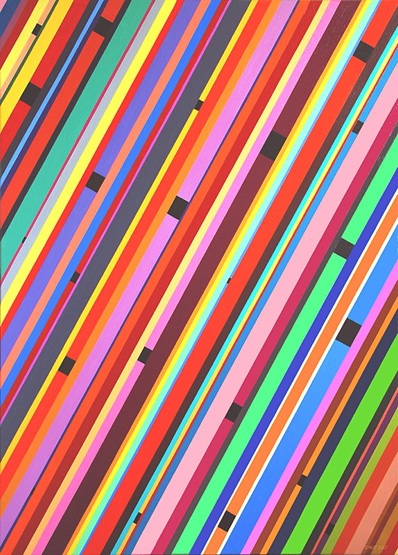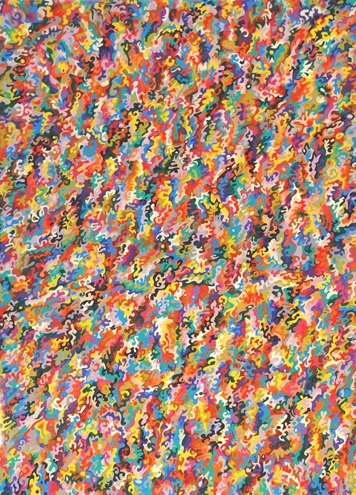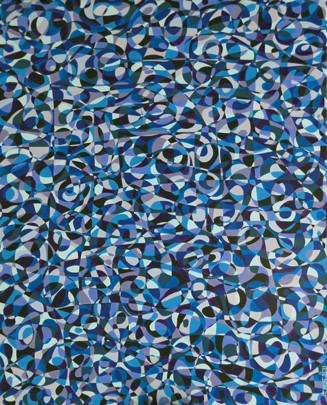
Meta-art: what the hell...
Who is afraid of Marianne Schuit?, oil on canvas, 2007

Take Who is afraid of Marianne Schuit?
What a nasty piece of work! Even the most self-assured art lover will not find any solid ground under his art loving feet, looking at this ‘hellish’ Meta-painting.
Well, that’s Meta-art... Presenting you well-known phenomena without ever offering you the possibility to put them together into something that is understandable.
But what the hell is happening then?
In fact there is happening too much to be told, but let me offer you some insight in a few characteristics of a Meta-painting.
-
1)Comprehensiveness
A Meta-painting does not express certain
phenomena, atmospheres and insights, it
expresses as much phenomena, atmospheres
and insights at the same time as ‘possible’.
-
2)Everything is connected with everything
In a Meta-painting there is nothing, absolutely
nothing, that is not connected to everything else.
No detail is minor, no matter how small it may
be. It influences everything else just like
everything else influences the detail.
-
3)Everything is contradictory, despite a grand harmony
A Meta-painting finds itself always, always(!), in
a state of grand harmony, which is incredible,
because everything in a Meta-painting is
contradictory.
-
4)There is a development in time; a Meta-painting is never finished
Because of the incredible amount of
contradictory phenomena, atmospheres and
insights presented to us by a Meta-painting, it is
impossible to ever see it for what it ‘actually is’.
The impression we get from a Meta-painting
constantly changes and will never stop changing
anymore.
However there is most certainly a certain
‘personality’ attached to every distinctive Meta-
painting, this ‘personality’ appears to be
incredibly ‘fluid’.
-
5)At the base of a Meta-painting there is utter nonsensicality
In Meta-painting the nonsensical makes sense.
The most important and influential theme in
contemporary society as well as in the arts,
freedom, finds itself at an all time high in the
Meta-paintings of Marianne Schuit, while the
meticulous style of these paintings seems to find
itself at the very opposite of freedom.
Contrary to the developments in the arts, in
Meta-art we find utter freedom of expression
rooted in utter bondage.


Take Who is afraid of Marianne Schuit?
Ad 1) Bold, cautious, noble, coarse, dynamic, static,
prozaic, poetic, profound, shallow, brutal,
tender, focused, unfocused, in your face,
withdrawn into itself, simple, complex,
invincible, fragile, grand, insignificant, touching,
repulsive, warm, chilly, straight forward, wary,
bound, free, flat, multi-dimensional, knowing,
asking, colourful, colourless, graphic, painterly,
refined, boorish, explorative, suggestive, red,
not-red, blue, not-blue, intellectual, sensitive,
loud mouthed, modest, tensious, at ease, ...
paradoxical..., boldheaded..., challenging...,
innovative..., philosophical..., contemporary...,
classical... cutting-edge..., endlessly layered...
Ad 2) Do not change the width of a particular line just
a fraction of an inch. Do not change any of the
colours even a little bit. Do not displace any
of the small black rectangles. Any change in
form, place or colour would most definitely
disrupt the Meta-painting from its grand (but
absurd...) harmony.
The nonsensical balance of all the nonsensical
elements of this Meta-painting would be
essentially disrupted by whatever change we
would impose on it. Everything is exactly in the
right place, with the right quality, to offer
exactly the right contribution to the whole of the
immage.
Ad 3) See Ad 1) Everything in Who is afraid of
Marianne Schuit? is contradictory. Still the
Meta-painting is finding itself in a grand
harmony.
This harmony is so non-sensical that we can
hardly believe it represents true harmony. The
Meta-painting is constantly ‘hanging in the
balance’ in our awareness, causing a never-
ending ‘feeling’ that it is slipping away from our
sense of hamony. And this causes a constant
sparkling liveliness that does not seem to be
connected to something in such a state of
grand harmony.
Ad 4) Through our eyes there is so much
contradictory information entering our brains,
that it is simply impossible to be aware of it all.
Our brains are built to be aware of phenomena
that exclude each other: warm - cold, hard -
soft, brutal - tender... In a Meta-painting such
pairs of contradictory phenomena do not at all
exclude each other, but exist at the same time
at the same place.
Looking at a Meta-painting means constantly
being confronted with phenomena that should
exclude each other, but still enter our brains
inseperably together. Because these brains
have to exclude, from each pair of
contradictory phenomena they choose for one
of them to concentrate on. But because our
brains do sense that the other quality is also
present in what our eyes show us, our brains
are switching their focus from time to time to
the other quality in order to see it all.
With an incredible amount of pairs of such
contradictory phenomena, this means our
brains never reach the point of seeing a Meta-
painting for what it ‘truly’ is. Its image in our
brains changes all the time, which we feel as a
real development in time.
Ad 5) No matter what thoughts we have about the
origins of our existence, we think that at the
base of it there is something utterly
nonsensical. God or nature, the fact that they
are the reason for our existence is something
we cannot grasp with whatever part of our
understanding.
At the base of each Meta-painting there are
phenomena that are just as utterly
nonsensical.
How is it possible that from the
very restricted style in which they are painted
grows a freedom of expression unknown to
even the most losely created works of art
ever?
How is it possible to contain such an
incredible amount of contradictory
phenomena, while still ending up in an
unbelieveably grand classical harmony?
In fact all of this is not possible, measured by
the standards of ‘ordinary’ art.
In Meta-art nothing could be more natural.
Which leads us to yet another highly
nonsensical characteristic of Meta-art:
however entirely artificial, Meta-paintings
always ‘feel’ all-natural. Their deep and
manifold layering is not created, it is all there
‘just because its there’.

Atlantis, oil on canvas, 2010

Night watch, oil on canvas, 2011
